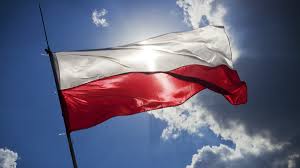
Ukrainian enterprises in January-April this year increased imports of copper and copper products in value terms by 41.4% compared to the same period last year – up to $53.034 million. According to customs statistics released by the State Customs Service of Ukraine on Friday, exports of copper and copper products for the period decreased by 8.1% – to $25.077 million.
In April, imported copper for $11.015 million, exported – for $6.949 million.
As reported, Ukraine in 2023 increased imports of copper and copper products in 2.2 times compared to 2022 – up to $140.795 million, exports decreased by 20.1% – to $72.078 million.
Ukrainian enterprises in 2022 reduced imports of copper and copper products in value terms by 64.3% year-on-year to $65.370 million, while their exports decreased by 56.3% to $90.245 million.

In January-April this year, Ukrainian companies increased imports of copper and copper products by 41.4% in value terms compared to the same period last year, to $53.034 million.
According to customs statistics released by the State Customs Service of Ukraine on Friday, exports of copper and copper products decreased by 8.1% to $25.077 million over the period.
In April, Ukraine imported $11.015 million worth of copper and exported $6.949 million.
In addition, in January-April 2024, Ukraine increased imports of nickel and products by 60.1% compared to the same period in 2023 to $8.484 million (in April – $787 thousand million), aluminum and aluminum products by 26.6% to $136.761 million (in April – $38.235 million).
At the same time, it reduced imports of lead and lead products by 13.8% to $406 thousand (in April – $124 thousand), imports of tin and tin products increased by 10.2% to $887 thousand (in April – $267 thousand), and increased imports of zinc and zinc products by 59.9% to $17.217 million (in April – $5.357 million).
Exports of aluminum and aluminum products in the first four months of 2024 increased by 5% compared to the same period a year earlier to $33.008 million (in April – $9.608 million), lead and lead products decreased by 35.3% to $3.537 million (in April – $703 thousand), nickel and nickel products amounted to $217 thousand (in April – $123 thousand), while in January-April 2023 it was $104 thousand.
Zinc exports for the first four months of this year amounted to $73 thousand (in April – $29 thousand), while in January-April 2023 it amounted to $48 thousand. Exports of tin and products amounted to $107 thousand (in April – $26 thousand) against $48 thousand in the same period a year earlier.
As reported, in 2023, Ukraine increased imports of copper and copper products by 2.2 times compared to 2022 – up to $140.795 million, while exports decreased by 20.1% to $72.078 million.
In addition, in 2023, Ukraine decreased imports of nickel and products by 74.2% compared to 2022, to $15.391 million, and increased imports of aluminum and aluminum products by 7.7%, to $366.463 million.
At the same time, it reduced imports of lead and lead products by 65.2% to $989 thousand, imports of tin and tin products by 23% to $2.728 million, but increased imports of zinc and zinc products by 18.8% to $45.966 million.
Exports of aluminum and aluminum products last year increased by 0.7% compared to 2022 to $97.616 million, lead and lead products increased by 23.5% to $14.778 million, and nickel and nickel products amounted to $532 thousand, while in 2022 it was $1.268 million.
In 2023, the company exported $130 thousand worth of zinc, compared to $1.331 million in 2022. Exports of tin and tin products amounted to $159 thousand against $424 thousand in 2022.
In 2022, Ukrainian enterprises reduced imports of copper and copper products in value terms by 64.3% compared to the previous year to $65.370 million, while their exports decreased by 56.3% to $90.245 million.
In addition, in 2022, Ukraine reduced imports of nickel and nickel products by 49.9% compared to 2021, to $59.754 million, and aluminum and aluminum products by 33.4%, to $340.398 million. At the same time, it reduced imports of lead and lead products by 66.6%, to $2.839 million.
Imports of tin and tin products fell by 33.5% to $3.312 million, while imports of zinc and zinc products decreased by 58.7% to $38.690 million.
In 2022, exports of aluminum and aluminum products decreased by 42.7% compared to 2021, to $96.972 million, lead and lead products – by 68.7%, to $11.970 million, and nickel and nickel products – by 73.9%, to $1.268 million.
Zinc exports in 2022 amounted to $1.331 million, while in 2021 they amounted to $550 thousand. Exports of tin and products in 2022 amounted to $424 thousand, compared to $346 thousand in the previous year.

In April, Ukraine increased its total foreign trade in dairy products by 10.7% compared to March to $41.4 million and by 20% compared to February, the press service of the Union of Dairy Enterprises of Ukraine (UDEP) reported.
According to the report, exports of dairy products were 17.8% higher compared to March, amounting to $17.1 million, and 11% higher compared to February, up to $15.4 million.
At the same time, import volumes increased by 6.2% compared to March and amounted to $24.3 million, which is 27.4% higher than in February, when it was recorded at $19.1 million.
Experts pointed out that imports in April were 1.43 times higher than exports. In March, this figure was 1.58 times higher than in February, in February – 1.24 times higher than in January, in January – 1.93 times higher than in December.
“In April 2024, the situation with exports of dairy products improved – they were exported for $ 17.1 million – the last time such volumes were recorded in June 2023. However, import volumes continued to grow – up to $ 24.3 million, which corresponds to the level of January-2024 (imports have been growing for the 2nd month in a row),” the UMPU stated.

Ukrainian cheese makers are facing a decline in sales due to both the high price of Ukrainian cheese and rising imports, according to Infagro, an industry news and analysis agency.
“In March, cheese imports increased by more than 40%, and in April this figure may increase by another 15-20%. That is, the share of European cheeses again accounts for about a third of total cheese sales in Ukraine,” the analysts said.
They emphasized that the share of imports in Ukraine’s domestic market is still lower than before the war, but this should force producers to take measures to stay in their own market.
“Due to the devaluation of the hryvnia, cheese exports are becoming even more profitable. At the same time, exports of cheese products, for example, to Kazakhstan, are falling rapidly. Ukrainian cheese products have already been practically pushed out of the Kazakh market by Russian producers. If exports of cheese products to Kazakhstan stop, production will have to be significantly reduced,” Infagro predicts.

The Interdepartmental Commission on International Trade (ICIT) has initiated a review of safeguard measures on imports of cut fresh roses to Ukraine, regardless of the country of origin and export, due to the expiration of the measures.
As stated in the decision of the ICIT dated April 12, which came into force on April 17 and was published in the Uryadovy Courier newspaper, Ascania-Flora LLC proposed to extend the special duty on imports of roses to Ukraine introduced three years ago: the duty rate in the first year of its validity was 56%, in the second year – 44.8% and in the third year – 35.84%.
The Ministry of Economy provided the results of consideration of this appeal, according to which the application of safeguard measures had a positive impact on the activities of the domestic producer, but did not fully eliminate the consequences of the damage caused to it.
The ICIT concluded that Ascania-Flora’s application contained sufficient information to indicate that the domestic producer was in the process of adapting to the conditions of competition.
Thus, the ICIT decided to review the safeguard measures on imports of fresh roses (UCG FEA code 0603 11 00) and their exports to Ukraine and entrusted it to the Ministry of Economy.
As reported, the ICMT’s decision of April 16, 2021, to impose a special duty on the import of roses was published in the Uryadovyi Kurier newspaper on April 21 of that year and entered into force 30 days after the date of publication.
According to the State Statistics Service, in January-February of this year, Ukraine imported 470.08 thousand pieces of cut roses, or 20.6 tons, worth $149 thousand. The main supplier of them is Ethiopia – 392.43 thousand pieces for $2103.5 thousand.
In turn, Ukraine exported 72.65 thousand roses worth $50.7 thousand to Lithuania and Moldova in two months.

It is advisable for Poland to maintain the blockade on Ukrainian grain imports, but transit should be allowed when transshipment capacities are free in Polish ports, President of the Grain and Feed Chamber of Poland Monika Pątkowska said in an interview with farmer.pl.
“Today it would be better if the blockade of grain imports is maintained, and when it comes to transit, we could implement it to some extent and thus help Ukraine when we have free handling capacities in Polish ports,” she said.
Pętkowska noted that Polish ports were not 100% loaded in the first quarter of 2024.
“We have to conclude that our port infrastructure, but also the railroad infrastructure is inefficient. Now is the right time to expand it. I believe that we slept through the last two years in this context. Romania has received funds from the European Union and is expanding its infrastructure, while Poland has not done it so far,” the public figure emphasized.
She is sure that Poland should show both Ukraine and the international community that it wants to help effectively but, on the other hand, firmly protects the interests of the Polish farmer. These two goals, in her opinion, should be combined.
“The sooner we come to a mutual understanding, the sooner we develop mechanisms, the less complicated will be the atmosphere that may hinder our broader cooperation not only with Ukraine, but also in the European arena,” summarized the president of the Polish Grain Chamber.